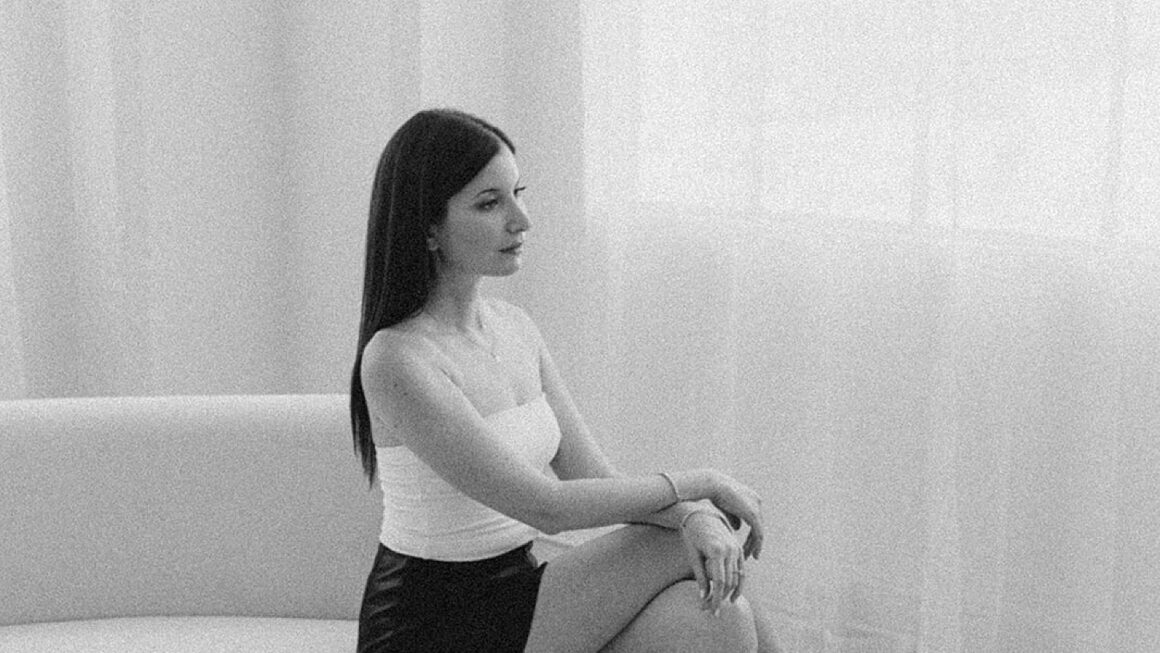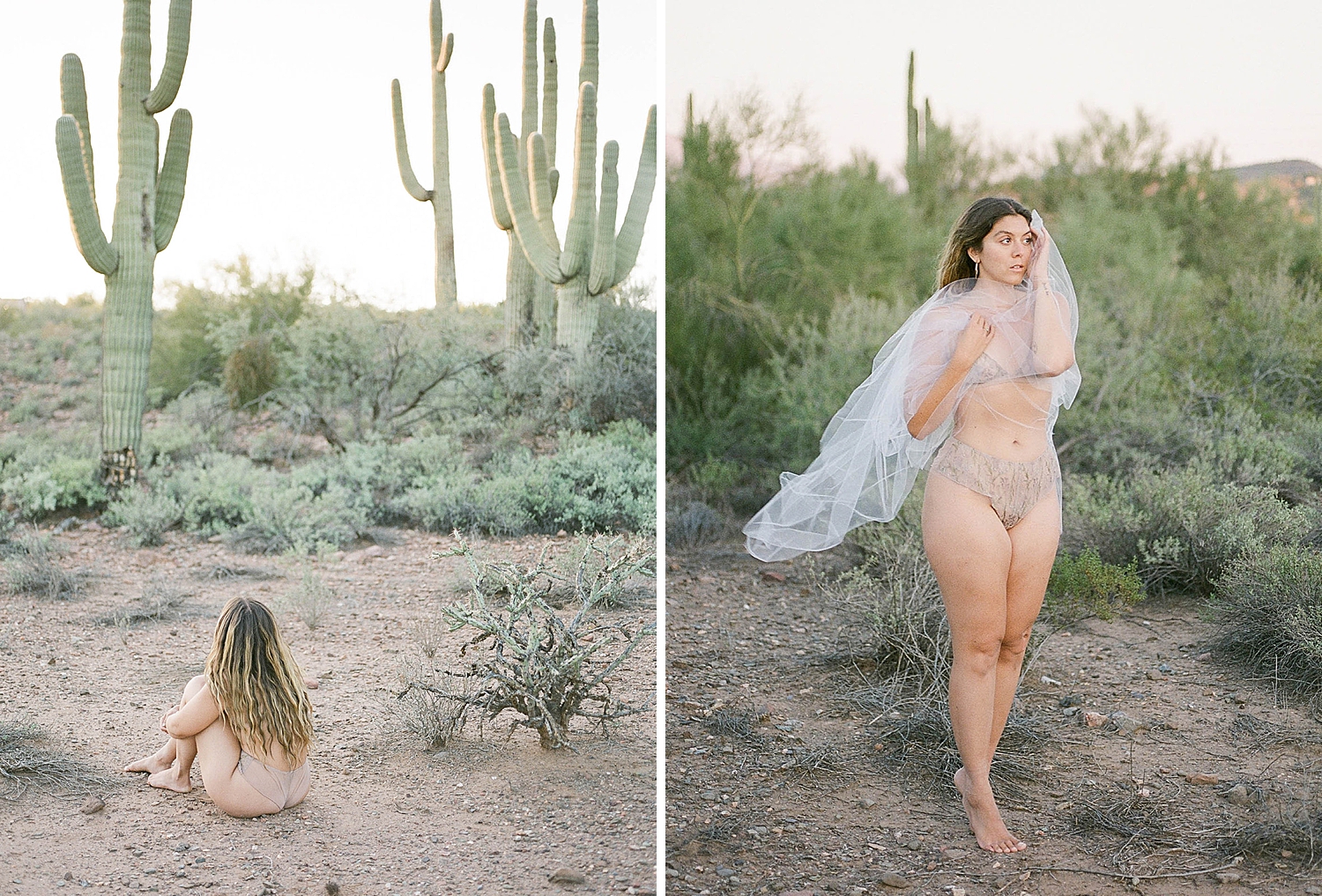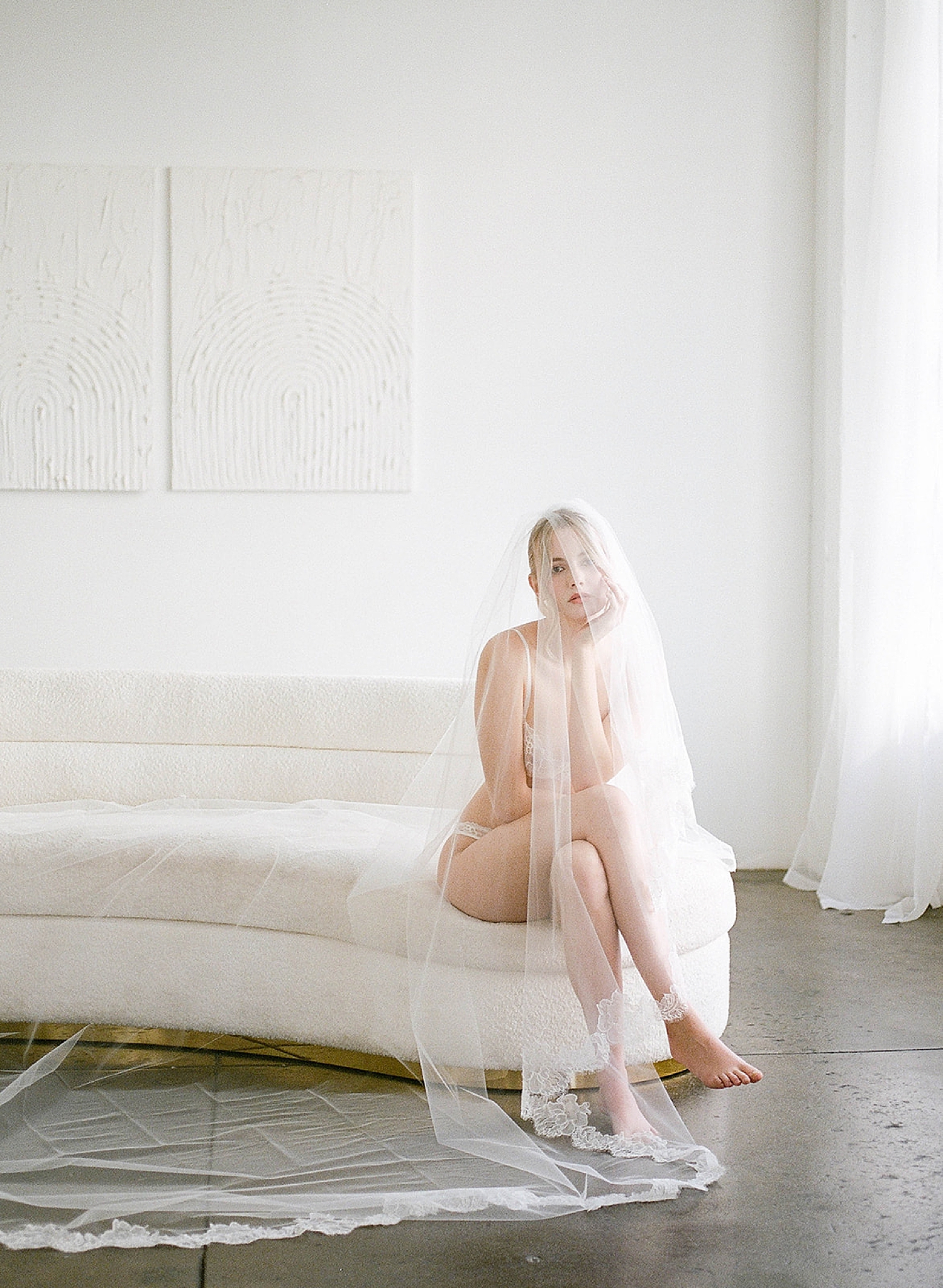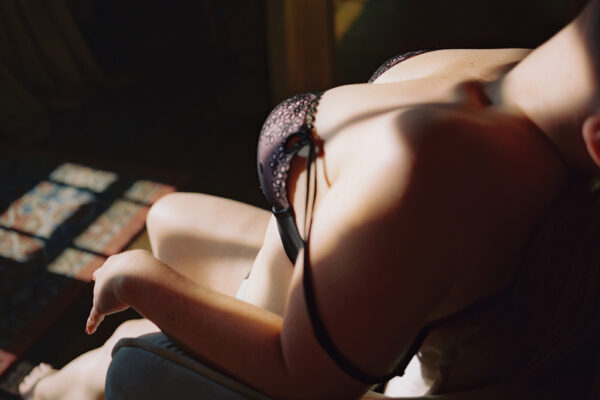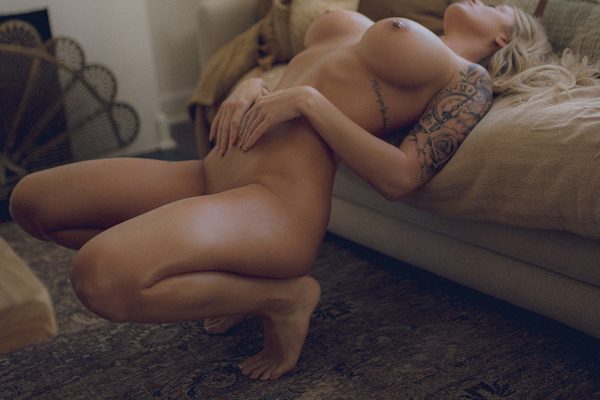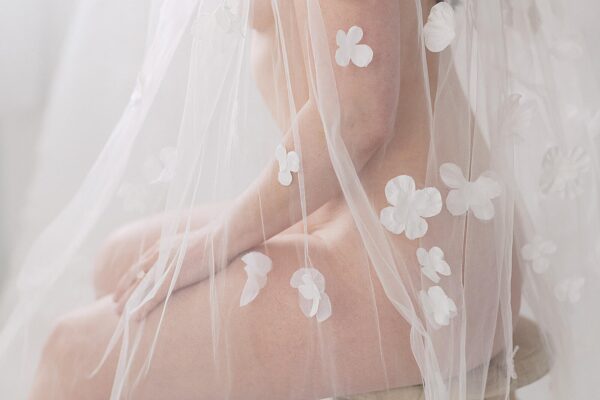When I think about photographers who get it—who see boudoir not just as a shoot, but as a soul-level experience—Annie Caplan is one of the first that comes to mind.
Her work is soft but strong. Feminine but fearless. And above all, deeply intentional.
In this interview, Annie opens up about how she went from shooting on film with her friends at age 12 to crafting VOGUE-worthy boudoir sessions rooted in healing, empathy, and radical inclusivity. We talk about her journey with endometriosis, her turning point after leaving corporate life, and why shooting with compassion is her personal revolution.
Annie has always been a visual storyteller—even back when she was using bed sheets as backdrops and her parents’ old film camera. But what truly pulled her toward boudoir was something more personal: her relationship with body image, shaped by growing up in a religious community where she felt “different,” and later by her journey living with endometriosis.
“I want to create inclusive, editorial-style imagery that showcases diverse bodies and cultures so that everyone feels seen, included, and beautiful,” she tells me. And if you’ve ever seen her work, you know she means it.
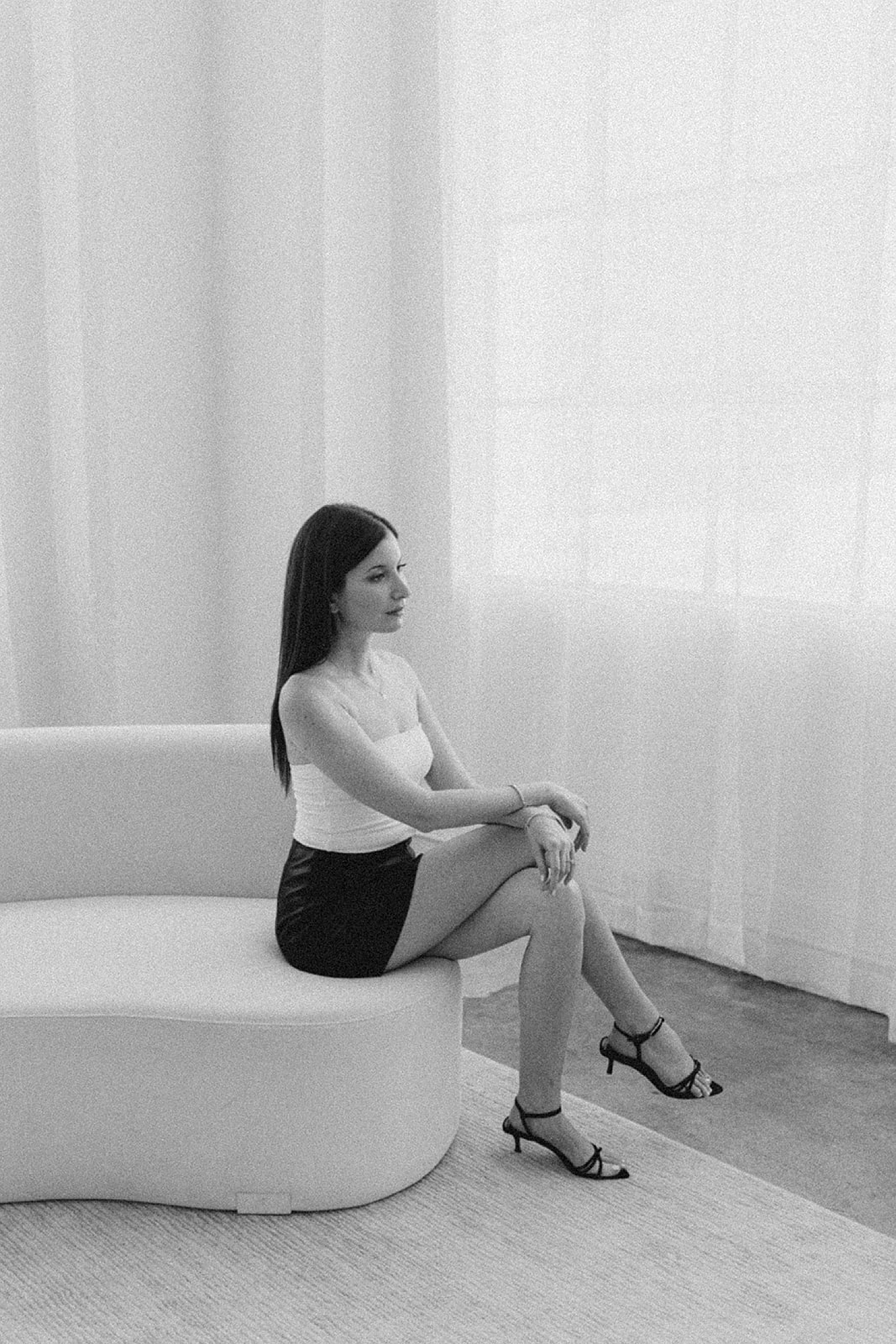
Can you tell me a little about how you first got into photography — and what drew you to boudoir specifically?
I’ve always had a creative spirit and a deep love for visual storytelling. Even when I was working in the corporate world, I would use my vacation time to travel and capture the beauty of different places, turning those moments into stories through photography. I also still have photos from when I was 12, using bed sheets as backdrops and my parents’ old film camera to stage photoshoots with my friends. That passion never left me.
What drew me to boudoir photography specifically was my own journey with body image. I grew up in a community where differences weren’t always embraced. I looked different than everyone else in my religious community, and I didn’t feel beautiful because I didn’t fit the mold. It wasn’t until I left that environment for one that was more diverse and began embracing my own identity that I realized how powerful it is to celebrate what makes us unique, and I wanted to help others do the same.
Living with endometriosis since my early twenties has also shaped my perspective. The condition affected not only my health but also my skin and confidence. I noticed how much of a difference a photo could make in how I felt about myself. A bad photo would devastate me, but a beautiful one could remind me that I am, in fact, beautiful. That’s when I realized: it’s all about light, angles, and intention.
Now, I want to capture women in their best light. We all have unflattering angles, but that doesn’t define us. I want to create work that helps women celebrate themselves, especially the things that make them different. My goal is to create inclusive, editorial-style imagery that showcases diverse bodies and cultures so that everyone feels seen, included, and beautiful.
“It’s not about objectification. It’s about being seen, celebrated, and empowered on your own terms.”
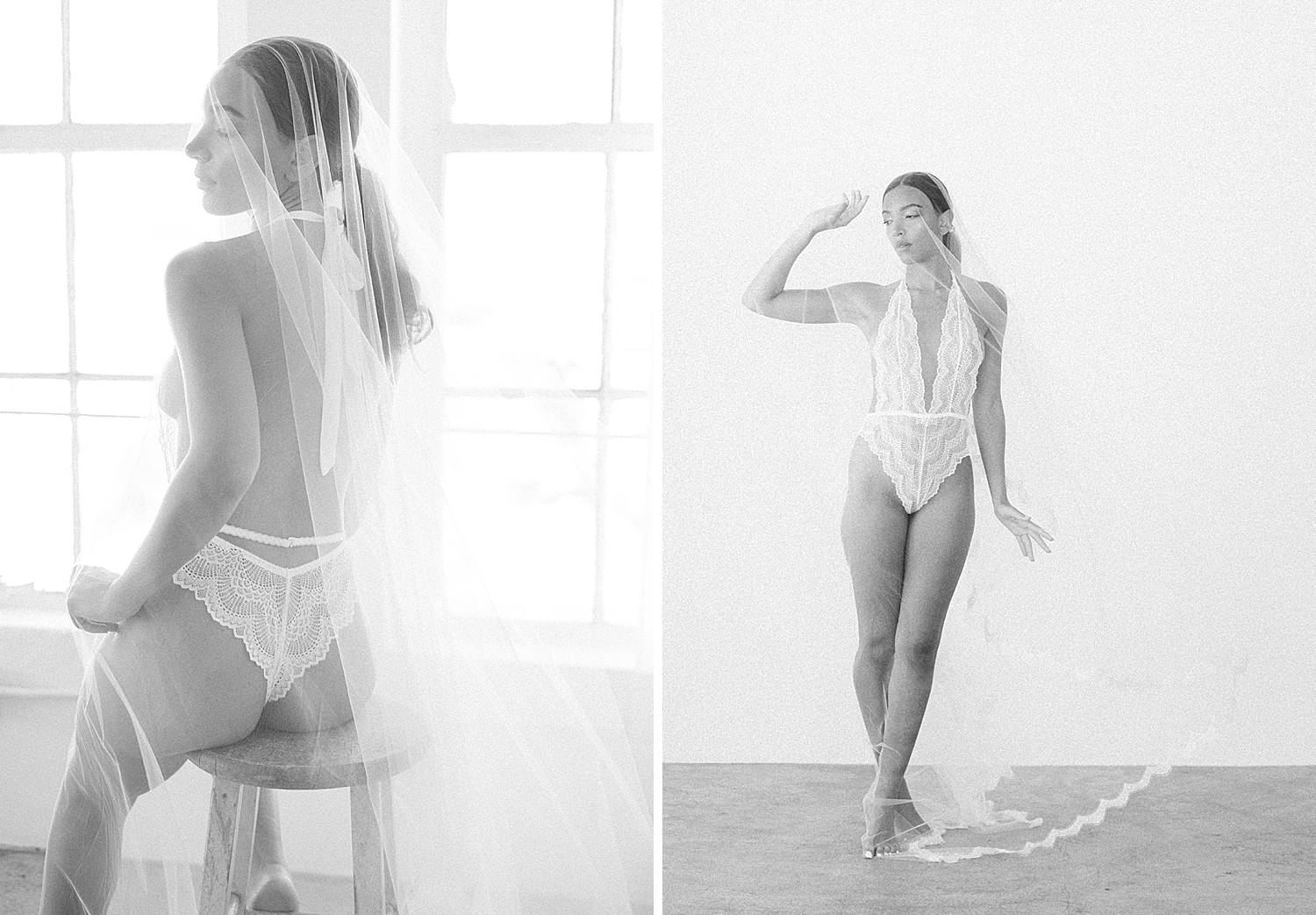
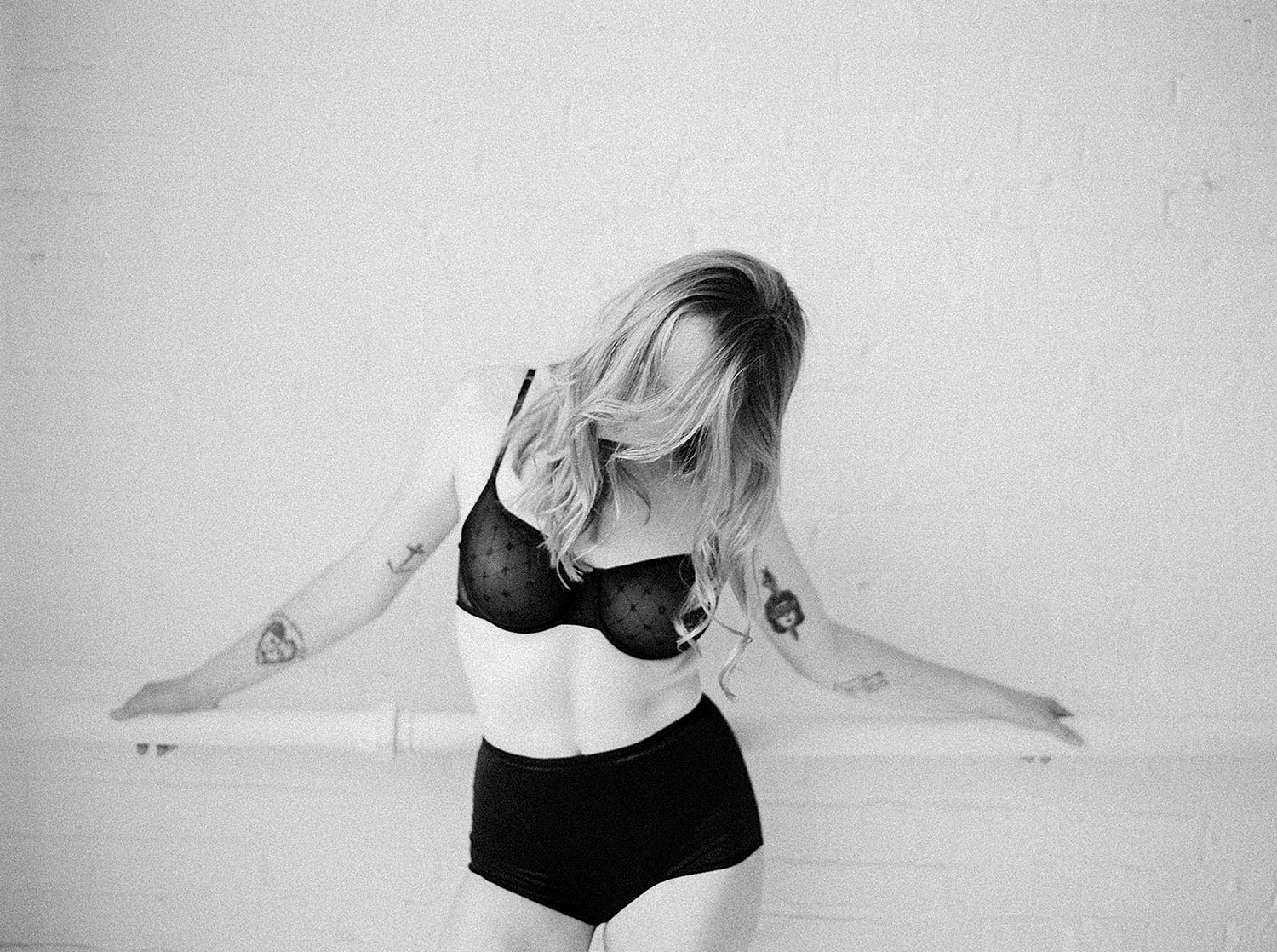
Annie calls her process “shooting with empathy.” She creates the kind of affirming, safe space she’s longed for herself—and she curates every gallery with a level of care that feels like a love letter. Her approach is slow, soulful, and deeply human.
It’s not just about capturing a moment. It’s about how you feel when you see yourself inside it.
Was there a turning point in your work where things started to feel different — more intentional, more personal?
For me, it’s always been personal. First and foremost, I believe in the healing power of art. As someone living with stage four endometriosis, having undergone four endometrial surgeries, my day-to-day life is often filled with pain and invisible challenges that most people simply don’t understand. I was doing all the “right” things to improve my skin, digestion, and overall well-being, but nothing truly began to shift until I started treating myself with compassion and self-love.
That shift deeply informs the way I photograph women. I truly believe that women seeing themselves in their best light can transform how they feel about themselves and therefore their entire well-being. I call my approach ‘shooting with empathy’ where I create the kind of safe, affirming space I wish existed for me on my hardest days. I help women feel truly seen in the way I’ve longed to be seen myself. My process is intentional: I photograph women and curate their galleries with care, removing any images that don’t feel like an honest or flattering reflection of who they are because I know firsthand how damaging it can be to view yourself through a harsh or unkind lens.
This empathetic approach has always been at the heart of my work. I began shooting boudoir on the side while still working in my corporate job, but everything changed in 2021. After a transformative one-on-one mentorship in boudoir and film photography, the passing of my grandmother, and major shifts in my corporate job during the pandemic, I made a life-altering decision: I left it all behind, moved to San Diego, and bet on myself and my passion.
Helping women feel beautiful and empowered became my full purpose and my journey has been both challenging and beautiful as I’ve grown, changed and healed alongside the women that I photograph.
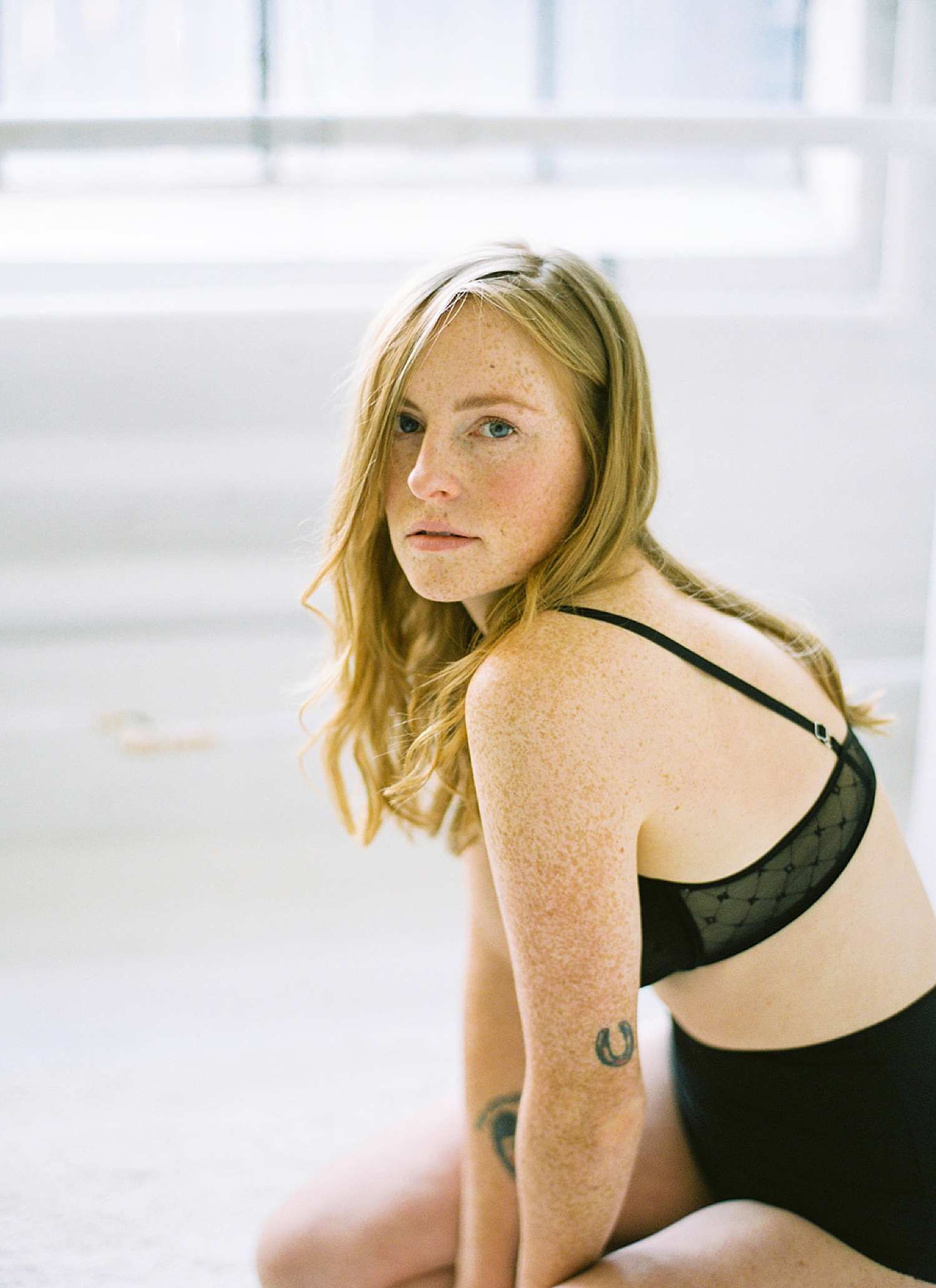

Before each session, Annie builds a mood board based on her client’s responses to a personal questionnaire. She uses film photography not just for the aesthetic—but for the slowness, the presence, the way it demands you be there. Her shoots are collaborations, grounded in trust and tenderness.
“Boudoir is a soulful collaboration where our energies meet and create something meaningful together.”
Your work has such a delicate, emotional quality. How would you describe your style?
I would describe my work as intentional and feminine yet edgy, with an editorial quality. My goal is to create VOGUE-worthy imagery for every woman, because I truly believe that every woman deserves to see herself reflected in magazine-quality photographs. At the same time, I aim to capture the soul and essence of each subject in a way that is minimal, where she is the focus.
Do you have any rituals or routines that help you get into a creative headspace before a session?
Prior to every session, I send my clients a questionnaire that digs deeper into how they feel about themselves and how they want to look and feel in their images. Their responses help me craft a personalized mood board, which I share with them to make sure I’ve captured their vision with intention. Boudoir is such a deeply vulnerable experience, and I see each session as a soulful collaboration space where our energies meet and create something meaningful together. I gently guide them through the process, blending their desires with my creative direction to bring that shared vision to life.
The night before and morning of a shoot, I focus on staying grounded and centered. One of the things I love most about working with film is how it slows everything down. It demands presence and intention; qualities I carry with me into every session.
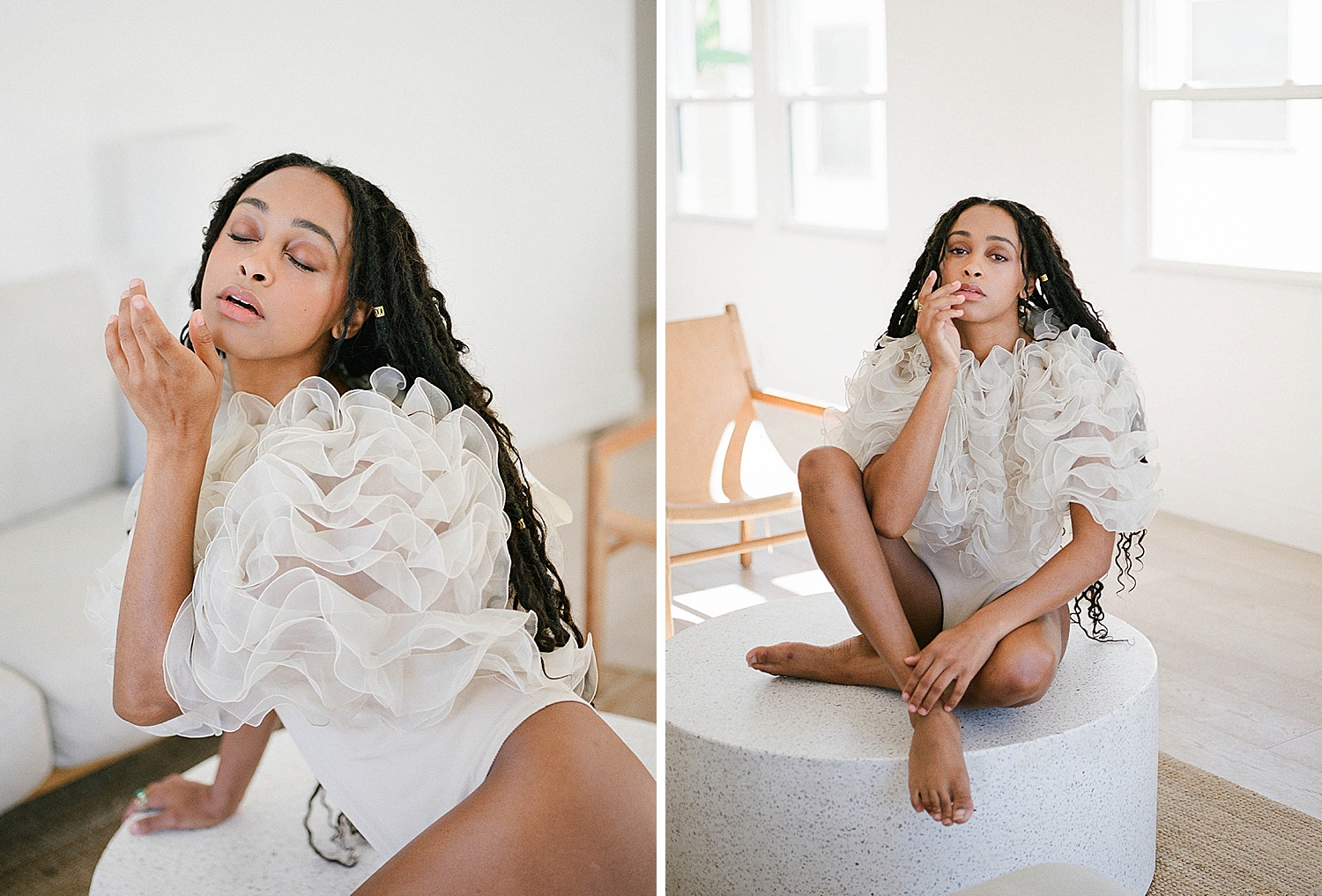
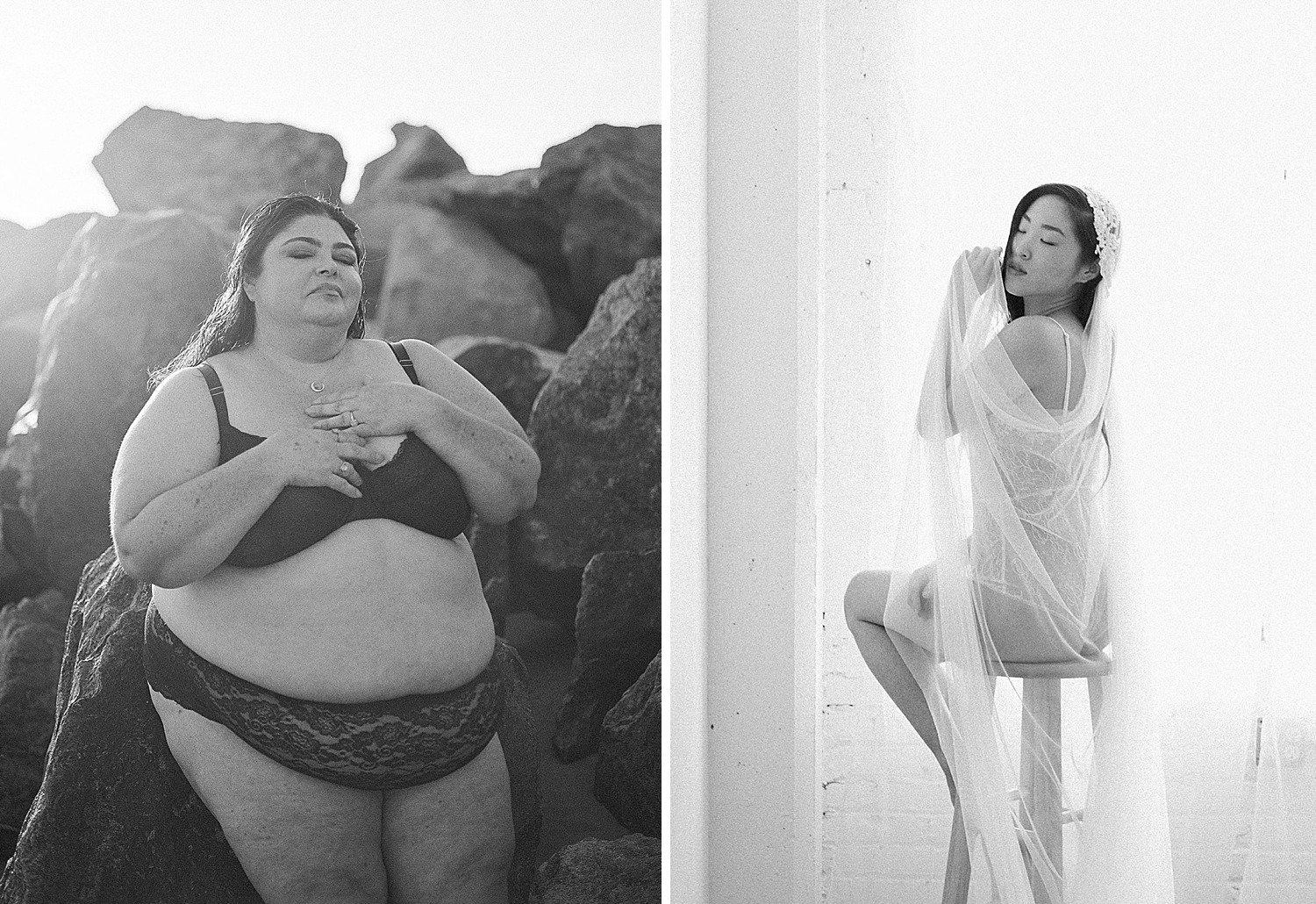
She’s not chasing trends—she’s chasing essence. Annie is inspired by bold brows, natural curls, jawlines, tattoos, softness, strength. What makes a woman her.
“I believe true beauty lies in individuality,” she says, and every photo she takes is proof.
What inspires your shoots — are you more drawn to light, texture, mood, people?
What inspires me most is my subject, the features and qualities that make them uniquely themselves. Whether it’s bold eyebrows, natural curls, striking bone structure, or meaningful tattoos, I’m drawn to the details that set them apart. It’s those distinctive elements that fuel my creativity and guide the way I photograph. I believe true beauty lies in individuality, and my goal is always to highlight what makes each person unforgettable.
My goal is to honor each woman as she is, telling the story of the body that has carried her through this life. I am capturing both her softness and her strength with intention and respect. Every aspect of the shoot from the lighting and posing to the creative direction, is crafted through the lens of the female gaze, not the male gaze. It’s about empowerment, not objectification. I want women to feel seen, celebrated, and connected to their own beauty on their own terms.
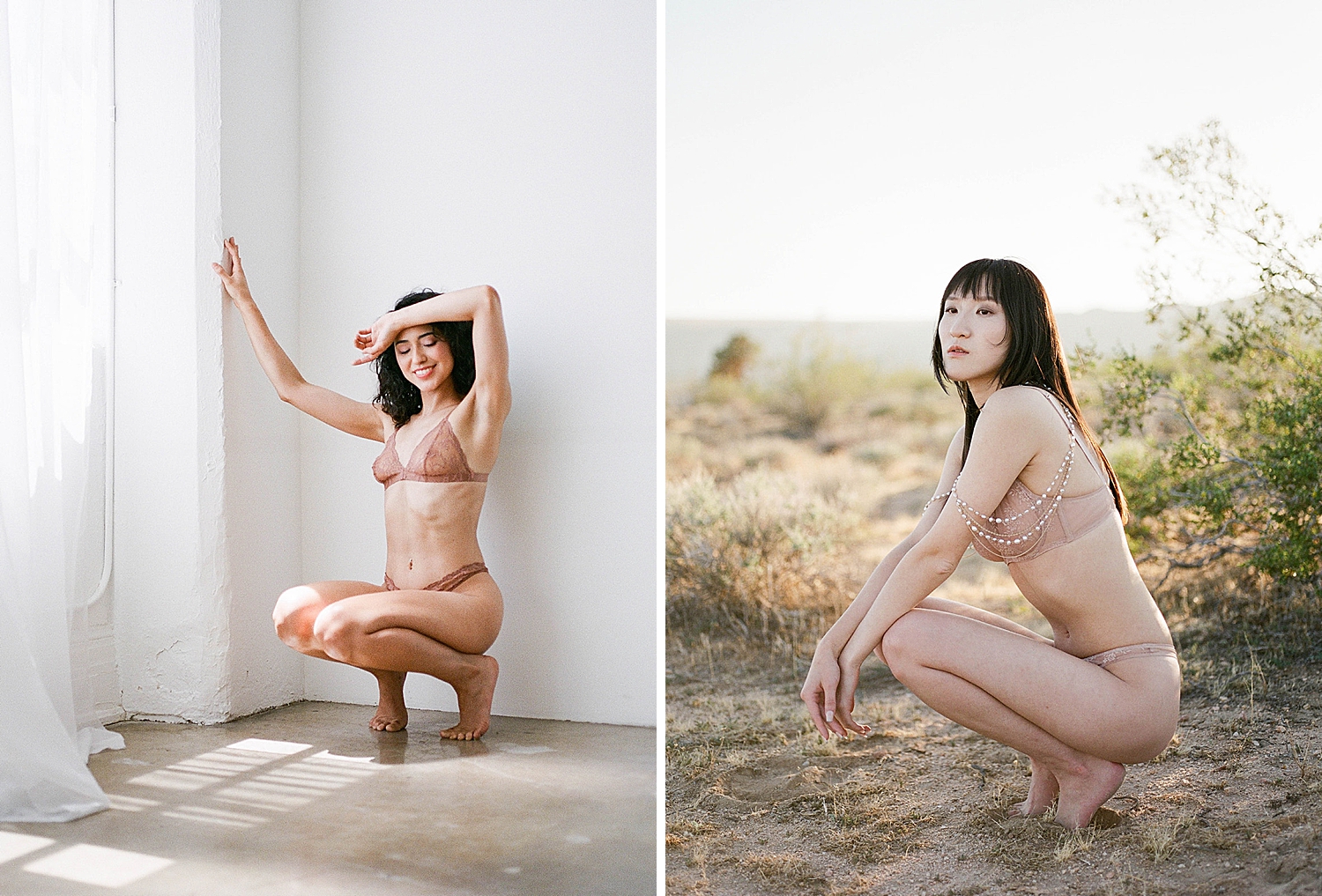
What does “feminine energy” mean to you when you’re behind the camera?
For me it’s about slowness and intention. Creating that safe space to be vulnerable. Film offers me the opportunity to slow down and be truly present which allows my subjects to do the same.
“Through this work, I’ve grown and healed alongside the women I photograph.”
You work with a diverse range of bodies and stories. How do you ensure your sessions feel inclusive and safe?
Inclusivity is at the core of everything I do. From the moment someone visits my website or social media, I want them to see that diversity in size, culture, age, and life experience is not just welcomed, but celebrated. Representation matters, and I make it a priority to showcase a wide range of bodies and stories in my work.
Over the years, I’ve had the honor of photographing women at all stages of life: those preparing for marriage, beginning their IVF journey, reclaiming their power after sexual trauma, honoring their postpartum bodies, or embracing the beauty of aging. Each session is rooted in empathy and gentleness. I strive to create a space where every woman feels safe, supported, and empowered to show up exactly as she is. It’s not just about the images; it’s about creating an experience.
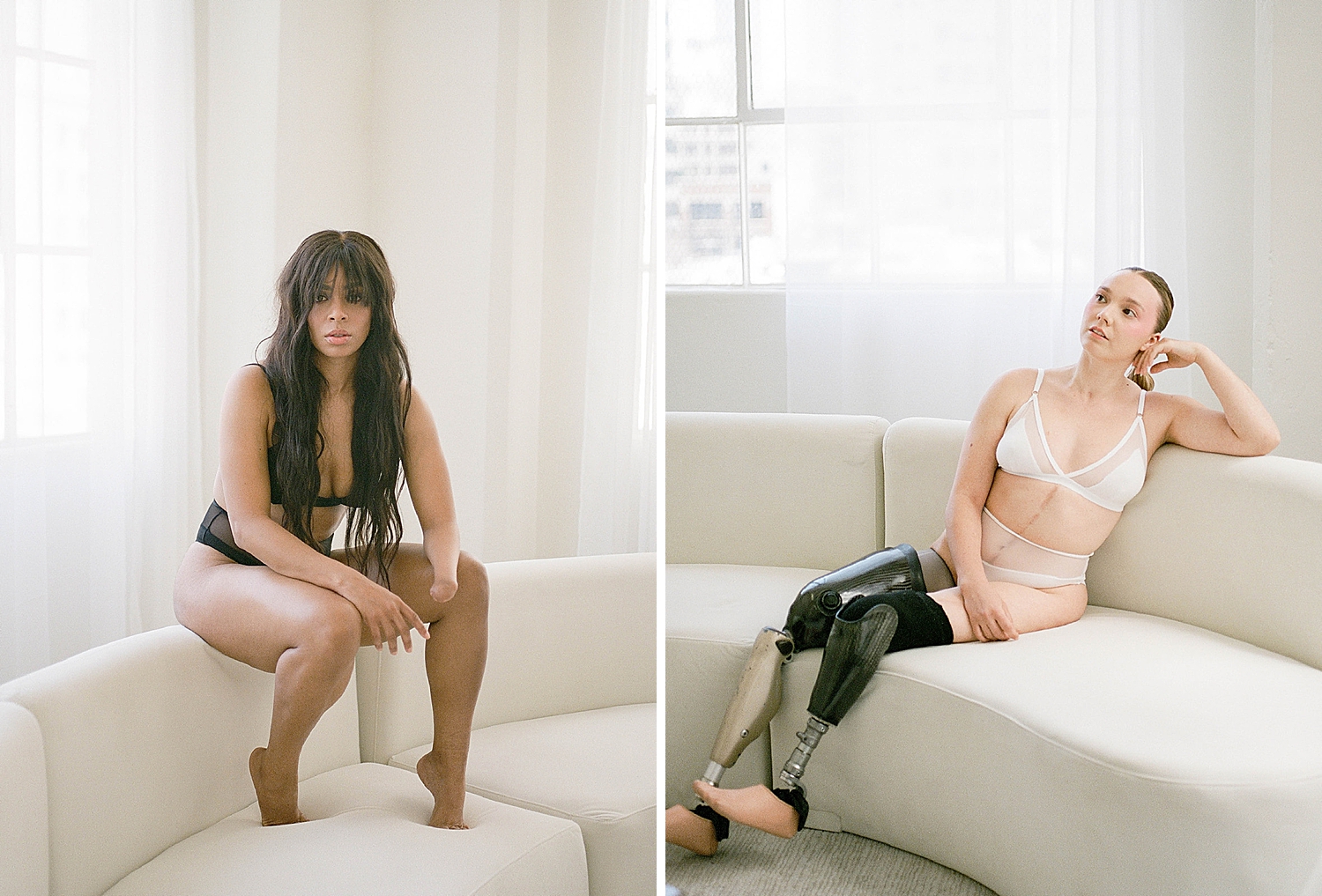
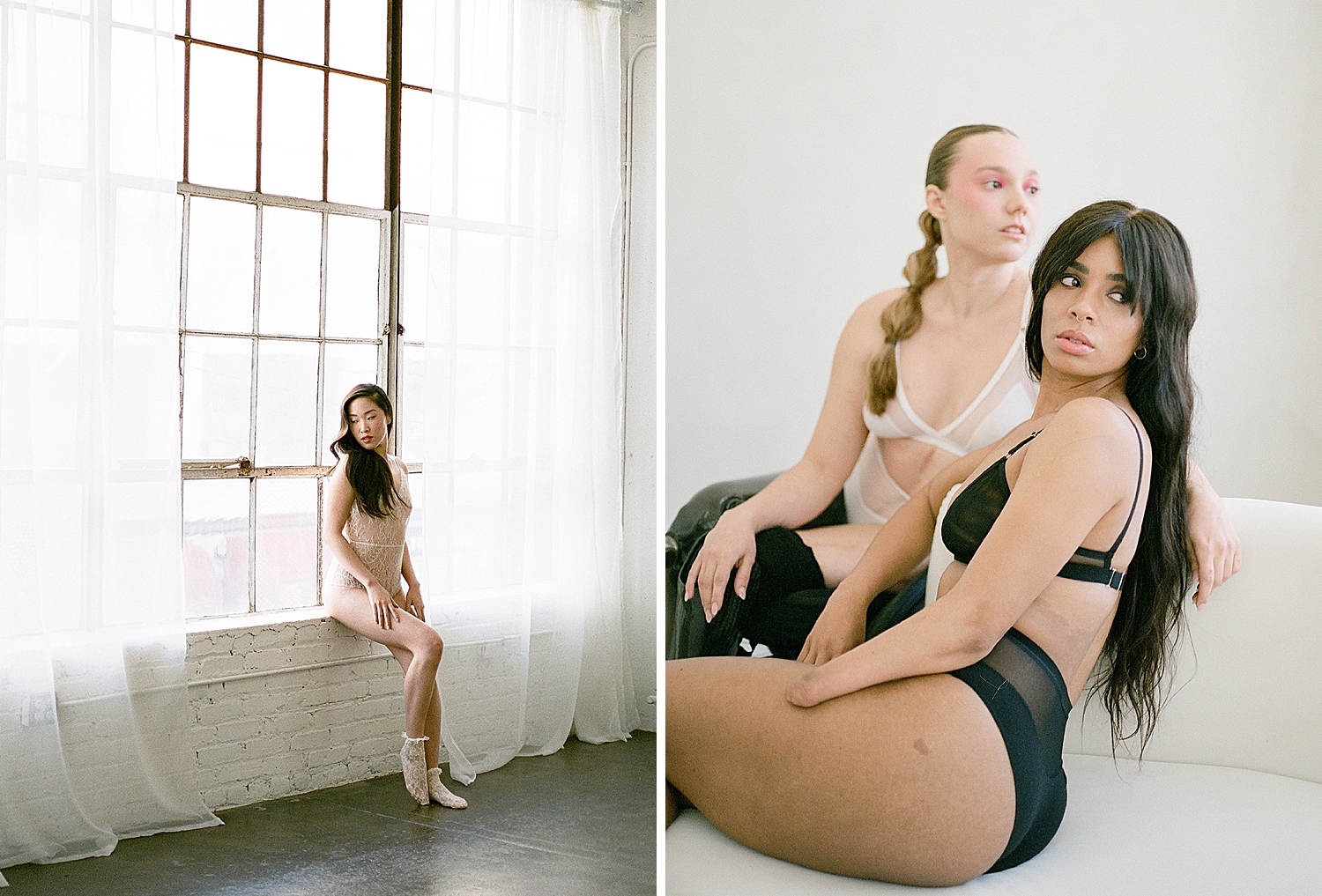
How has boudoir changed you — as an artist, or even as a person?
Shooting boudoir has softened me. It’s slowed me down and made me more intentional—not just in my art, but in how I move through life. Through this work, I’ve had the absolute honor of holding space for countless women and documenting their stories. In many ways, we’ve grown and healed together. It has given me a sense of purpose that I will always carry.
What’s one image you’ve taken that still lingers in your mind?
There are definitely images and stories that have left a lasting impact on me, but choosing just one feels like choosing a favorite child. Each session holds its own kind of magic, and I’m endlessly grateful to the women who trust me to capture their journey. The truth is, it’s not just about the photos, it’s about the connection, the transformation, and the emotion behind each frame that stays with me long after the shoot is over.
If I had to choose one, it would be the first few images I had published in PhotoVOGUE. I was invited to photograph a women’s retreat in Joshua Tree—not even a boudoir session, but the women there knew that’s what I specialized in. We were out in the desert shooting group photos when one of the women asked if she could do a few nude portraits. I said, “Of course.”
She stripped down in the middle of the desert, completely free and empowered, while the other women cheered her on, holding her coat and even my extra lenses. That sense of sisterhood, support, and liberation was unforgettable. Inspired by the moment, several of them decided to pose nude together, and the images we captured became my first published work in PhotoVOGUE. It was one of those rare, soul-stirring moments where art, vulnerability, and community intersected perfectly.
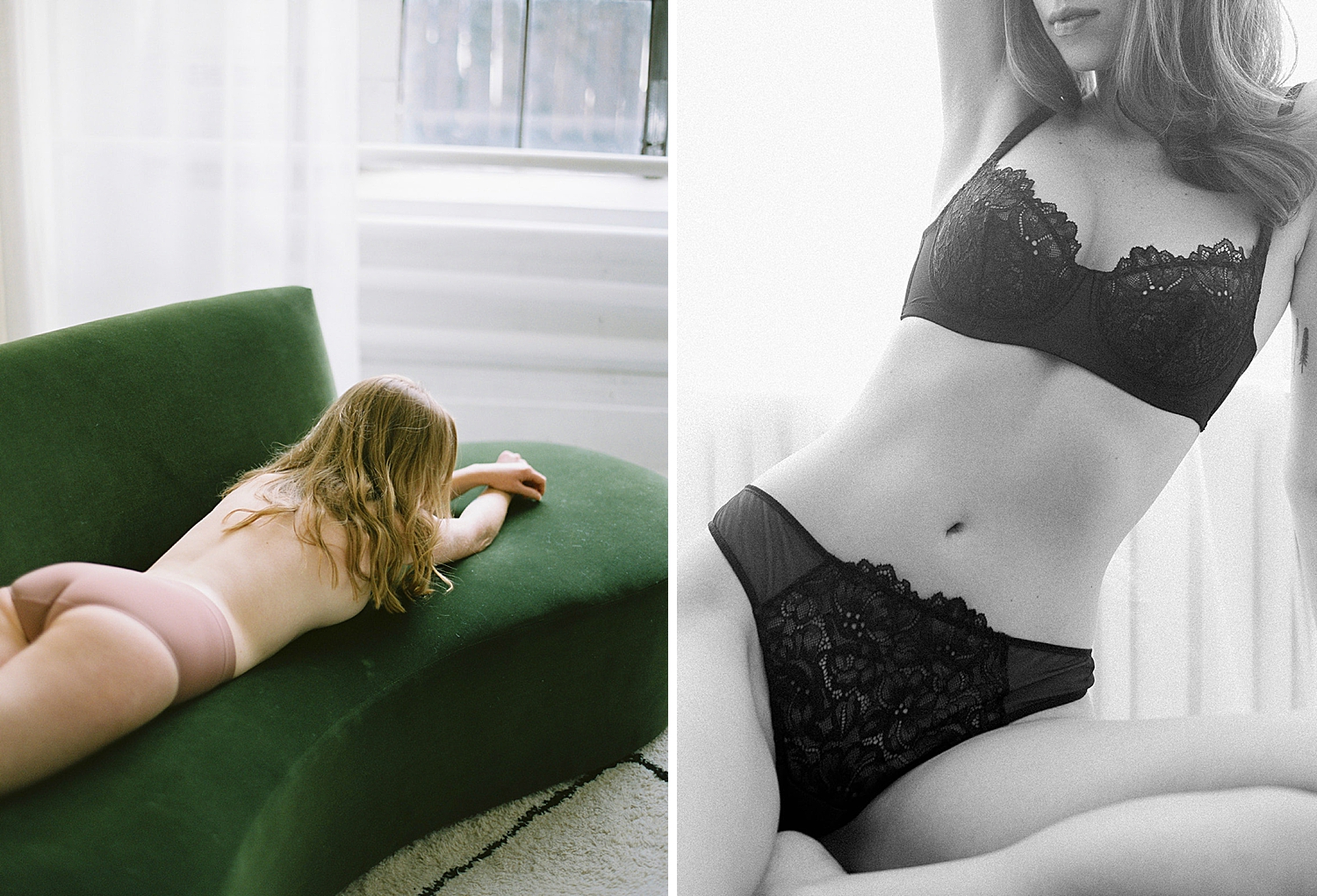
Go-to soundtrack in the studio right now?
I like to ask my clients what they want to hear, so that they feel comfortable and have music for the session that hypes them up, but it they have no preference, Kacey Musgraves is my number one!
Three words that describe your work?
Intentional. Feminine. Editorial.
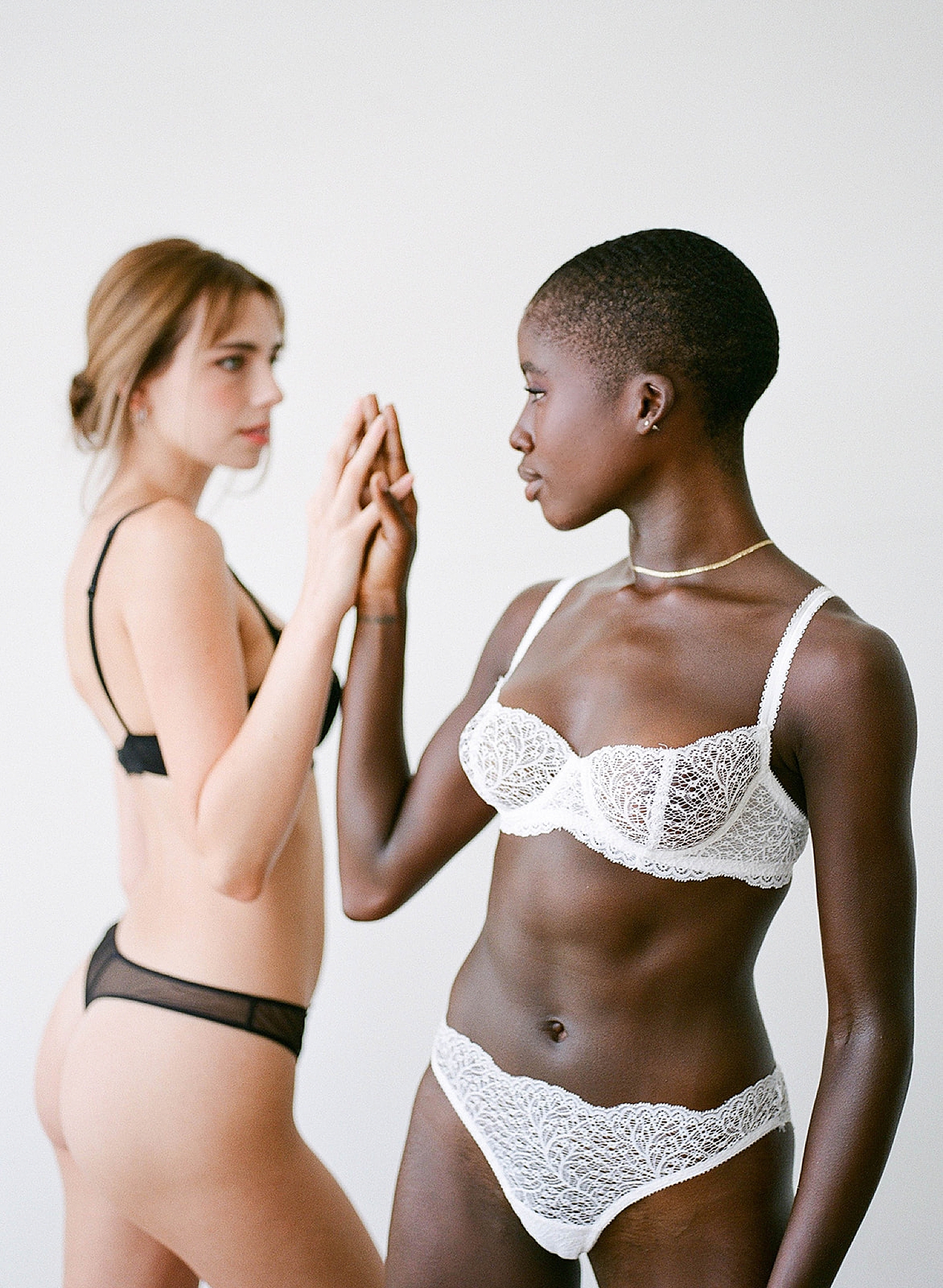
One thing you’d tell someone nervous about doing a boudoir session?
Choose a photographer who feels like the right fit, not just in style, but in energy. Someone who takes the time to connect with you beforehand, who’s willing to have a real conversation and understand your vision. Look for someone whose work speaks to you, but also someone who makes you feel safe, seen, and held throughout the process. The right photographer doesn’t just take beautiful images, they create a space where you can fully show up as yourself.
“My goal is to honor each woman as she is, telling the story of the body that has carried her through this life.”
It’s not about objectification. It’s not about someone else’s fantasy. It’s about being seen, celebrated, and empowered on your terms.
And it’s not just about the photos. It’s about the connection. The shift. The moment you realize: you’ve been art all along.
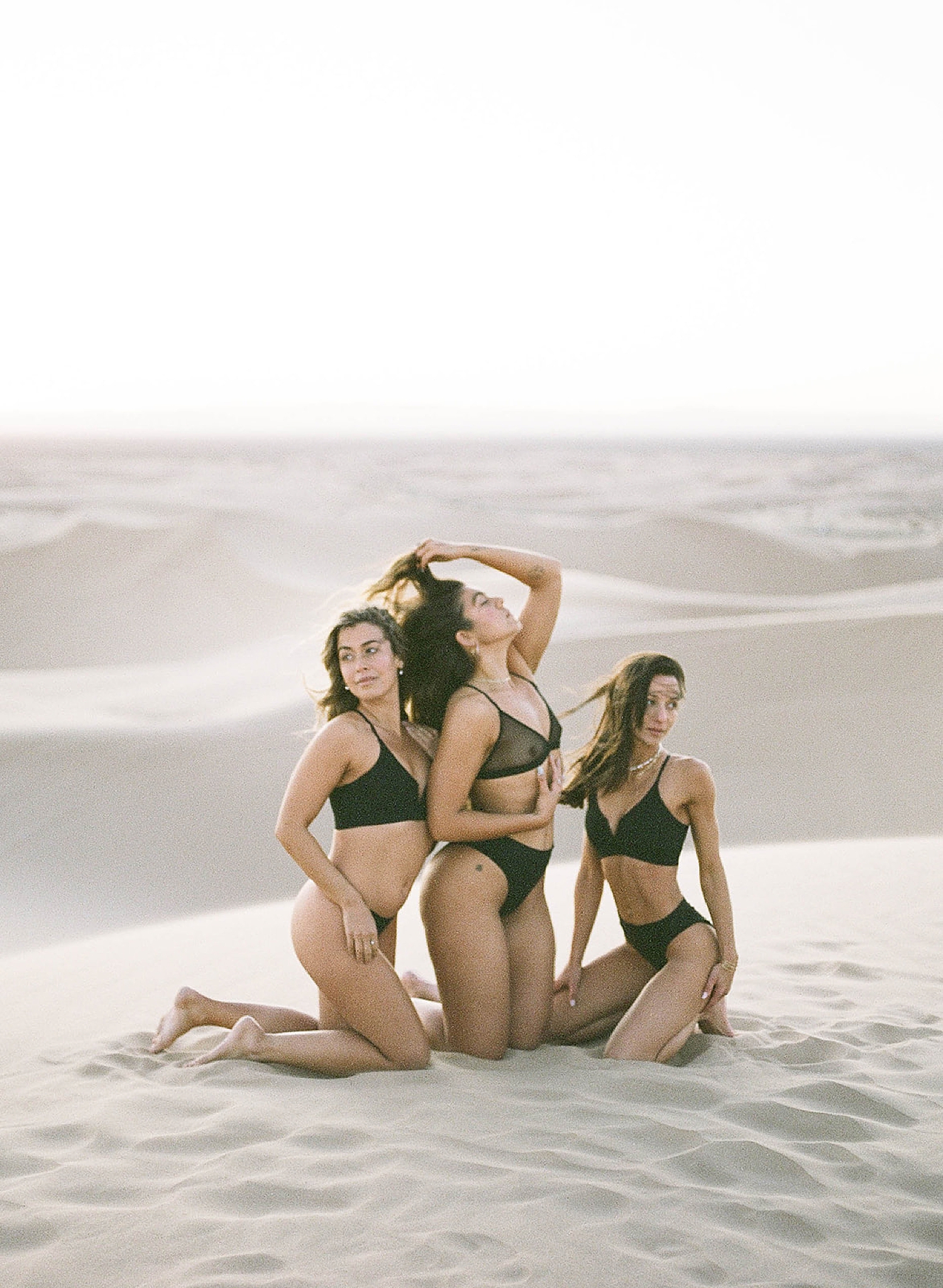
KT’s Final Thought:
Annie’s work reminds me why we do this.
Why we get vulnerable. Why we tell stories. Why we take the risk to be seen.
Because in the right hands—in Annie’s hands—boudoir becomes more than a session. It becomes a homecoming. Check out her work here.
xo, KT

